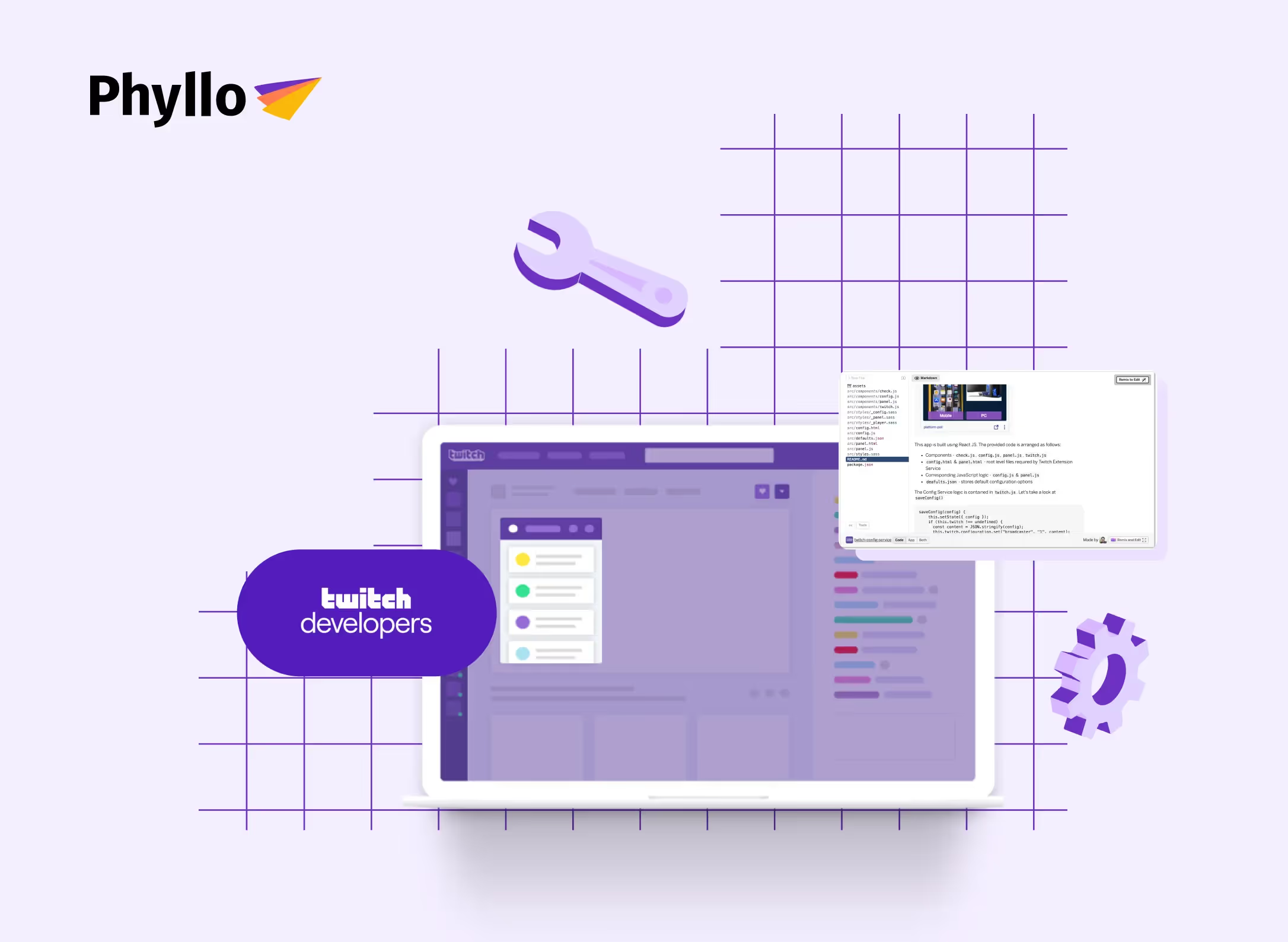TL;DR
In 2025, influencer authenticity has become the gold standard for impactful marketing and brand safety. The rise of advanced influencer fraud detection and AI-driven influencer vetting tools empowers brands to unearth red flags—spotting fake influencers and confirming real ones at unprecedented speed and scale. Discover what truly signals authenticity, which API insights matter most, typical warning signs, and how to future-proof your partnerships. We also share highlights from Phyllo’s new eBook, "Behind the Hashtags", arming you with crisis checklists, vetting truths, and market solution comparisons for safer, smarter campaigns.
What Is Influencer Authenticity in the 2025 Landscape?
The concept of influencer authenticity has evolved. With consumers demanding transparency and brands facing heightened scrutiny, “realness” is no longer just about personality or story—it’s measurable, and failure to meet these standards can ruin reputations.
- Authenticity now means transparent, organic, and consistent engagement.
- Tech-savvy audiences use API-powered tools to verify credibility.
- Brands prioritize long-term partnerships with creators who share their values and withstand digital scrutiny.
Explore more on the meaning and evolution of influencer authenticity.
The New Criteria: Signs of a Truly Authentic Influencer
In today’s crowded landscape, authenticity isn’t just subjective. APIs and advanced analytics help brands and platforms pinpoint hallmarks of the real deal.
Hallmarks of Authenticity
- Consistent, organic follower growth: No suspicious spikes.
- Healthy engagement rates: Neither abnormally high nor suspiciously low compared to niche averages.
- Genuine content: Relatable storytelling over overt selling; transparent sponsored disclosures.
- Community interaction: Thoughtful replies, active discussions, and audience-building.
- Platform diversity: Presence and consistency across multiple social networks.
In 2025, 89% of consumers report valuing authenticity in influencer content—and 92% trust real recommendations over ads .
Understanding Fake Influencers and the Stakes for Brands
The growth of influencer marketing is shadowed by the persistent problem of fake influencers—creators who inflate their stats or even fabricate their identity.
What Are Fake Influencers?
- Real people with inflated stats: They buy followers, engage bots for likes, or join engagement pods.
- Completely fabricated profiles: AI-generated personas with stolen imagery and fake engagement.
These creators promise reach but bring little real influence, resulting in wasted budgets and damaged reputations. The global cost of influencer fraud is estimated at over $1.3 billion a year.
API-Powered Influencer Fraud Detection: The 2025 Standard
Manual vetting is long gone; top brands rely on API and AI-powered influencer vetting tools that scan hundreds of signals for red flags in real time.
Key Features of Fraud Detection APIs
- Engagement and Follower Pattern Analysis: Maps audience growth, flags sudden spikes, and checks for organic trends.
- Bot and Fake Follower Identification: Detects inauthentic accounts via known bot behavior patterns.
- Cross-Platform Presence Checks: Verifies if an influencer is genuine across Instagram, TikTok, YouTube, etc.
- Content Scrutiny: Analyzes for recycled, plagiarized, or AI-generated material.
- Risk Scoring: Rates the likelihood of inauthentic influence, guiding decision-makers.
Top tools include Phyllo’s influencer vetting for brand safety, HypeAuditor, NeoReach, and Upfluence.
Top Red Flags: Detecting Inauthenticity in 2025
APIs aggregate vast datasets to uncover warning signs that human reviewers might miss, empowering brands with actionable insights.
Follower & Growth Patterns
Sudden Spikes in Followers
A steady rise is healthy. Sudden, unexplained jumps can indicate purchased followers.
Inconsistent Engagement
A 100k-follower account with only a handful of likes or comments per post, or dramatic swings between posts, suggests manipulation.
Engagement Rate Table
Content Quality and Presence
- Low-quality, repetitive, or irrelevant content
- Inconsistent posting or attribution
- Fake or stock profile images/AI avatars
- Too many sponsored posts without organic content
Audience and Engagement Quality
- Mostly ghost followers (accounts without posts or bios)
- Bot-like commenters or likes: Repetitive comments, non-sequitur emojis, or engagement spikes at odd hours
- Fake international audiences (disproportionate followers from low-relevance regions)
Using Influencer Vetting Tools: Features and Best Practices
API-powered vetting solutions have become indispensable for ensuring influencer authenticity and brand safety[5].
Best-in-Class Features
- Comprehensive digital scans: Historical and cross-platform audits for risk factors and behavioral patterns.
- Custom flagging: Ability to flag keywords, topics, or engagement types specific to your brand’s sensitivities.
- Automated reporting: Fast, thorough profiles delivered within minutes.
- Real-time updates: Alerts on risky behavior or fraudulent trends as they emerge.
Leading tools like Phyllo go beyond surface metrics—scanning digital footprints across platforms and providing custom risk scores for each campaign.
Real API Case: Vetting in Action
Brands using API-powered tools typically follow a repeatable process:
Step-by-Step API Vetting
1. Import Influencer Handles
Enter the social profile URLs or handles for analysis.
2. Data Pull & Pattern Analysis
The vetting tool fetches real-time and historical data: follower graphs, engagement stats, content quality, audience breakdowns.
3. Automated Red Flag Reporting
The system generates scores or warnings: e.g., "follower spike detected June 2025", "abnormal like-to-follower ratio", "suspicious regional audience".
4. Custom Brand Fit Checks
Brand safety modules search for controversial posts, alignment with company values, and partnership history[5].
5. Decision and Documentation
Reports can be archived for audit trails.
For a deeper look into Phyllo’s solution, see influencer vetting for brand safety.
Why Authenticity Matters: The ROI and Consumer Perspective
In 2025, influencer ROI depends on trust, not just scale. Data shows authentic creators consistently drive better results for brands and maintain longer, mutually beneficial relationships.
- 92% of consumers trust influencer recommendations over traditional ads.
- 88% say influencers must genuinely care about what they promote.
- Brands using vetted, authentic influencers see higher engagement and lower crisis risk.
Nano- and micro-influencers, with smaller but more engaged communities, are leading ROI conversations.
Comparing Top Influencer Vetting Tools (2025)
Choosing the right influencer vetting tool means balancing depth, platform coverage, and customizability.
See in-tool comparisons at Phyllo’s vetting solution.
Best Practices for Influencer Authenticity & Brand Safety
Follow these steps in your next campaign:
- Never skip digital vetting—API red flagging is faster and more accurate than manual review.
- Balance historical and current data—look for patterns, not just snapshots.
- Go beyond surface metrics—engagement quality beats quantity.
- Check regional and demographic audience fit—ensure real impact where it counts.
- Document everything—audit trails keep your marketing team safe and sponsorships transparent.
FAQs:
What is influencer authenticity and why does it matter?
Influencer authenticity means transparency, real engagement, and honest advocacy. Today’s consumers see through fake content, rewarding only influencers they perceive as genuine. Authenticity leads to better engagement, sales, and brand safety.
How do API-powered tools detect influencer fraud?
These tools analyze large datasets from social platforms using algorithms to flag suspicious follower growth, bot engagement, engagement pods, and fake content. Automated checks reveal red flags invisible to human reviewers.
What are the most common signs of a fake influencer?
- Sudden surges in followers without press or viral content
- Very low or suspiciously high engagement rates
- Ghost followers, spammy comments, and poor-quality content
- No presence or engagement on other platforms
What types of influencer fraud exist?
- Buying followers or likes to inflate numbers
- Bot-generated engagement and comment pods
- Fabricated profiles using stolen or AI-generated content
Can vetting tools distinguish between real and fake engagement?
Yes—leading platforms use AI models trained on behavioral and engagement patterns to separate authentic activity from manipulation, letting brands focus on quality over quantity.
Is manual vetting still relevant in 2025?
Manual vetting is now risky and slow. API-powered vetting tools are faster, deeper, and more accurate, providing brands and agencies with near real-time protection.
What’s the impact of fake influencers on brand campaigns?
Working with fake influencers can waste budgets, erode consumer trust, produce misleading analytics, and risk public backlash or PR crises if discoveries become public.
How do I choose the right influencer vetting tool?
Look for tools with cross-platform scanning, historical pattern analysis, customizable risk flags, and fast automated reporting. Review solution comparisons from trusted industry platforms like Phyllo.
Behind the Hashtags: Essential Brand Safety & Influencer Vetting Lessons
The digital world moves fast, and online partnerships carry both huge rewards and major risks. Phyllo’s new eBook, "Behind the Hashtag: Brand Safety Lessons from Influencer Collaborations", serves as an indispensable resource for marketers and compliance teams in 2025.
What the eBook Covers
The Influencer Vetting Mistakes That Live Forever
Learn from notorious case studies where skipping proper vetting led to permanent digital backlash. Understand why it’s crucial to investigate digital footprints and not just follower counts before signing any partnership.
Battle-Tested Lessons to Avoid Online Backlash
Implement hard-earned strategies for structuring campaign disclosures, creative briefs, and collaboration rules—so your influencer program thrives, not just survives.
Crisis Response Frameworks & Online Scrutiny Checklists
Access step-by-step frameworks for managing campaign-related emergencies—plus thorough checklists for vetting digital histories and monitoring ongoing reputation risk.
Comparative Analysis & Recommendations
See detailed comparisons of today’s leading vetting tools and platforms. Find objective recommendations tailored to your brand size, vertical, and compliance requirements.
For further reading, explore more on influencer authenticity and use Phyllo’s influencer vetting for brand safety to future-proof your campaigns against influencer fraud.
Take the next step toward genuine influence by combining smart partnership strategies, API-powered monitoring, and the lessons of those who’ve learned the hard way so your brand grows on trust, not trickery.










.avif)

.avif)
